Numerical Study on the Rising Motion of Bubbles near the Wall
Abstract
:1. Introduction
2. Numerical Simulation Method
2.1. Governing Equation
2.2. Geometric Model
2.3. Grid Independence and Algorithm Verification
3. Numerical Simulation Results
3.1. Analysis of Single Bubble Motion near the Wall
3.1.1. The Influence of Bubble Wall Distance
3.1.2. Influence of Bubble Diameter
3.2. Analysis of the Motion of Double Bubbles near the Wall
3.2.1. Vertically Rising Bubbles
- (1)
- Double bubbles of equal diameter
- (2)
- The upper small and the lower large double bubbles
- (3)
- The upper large and the lower small double bubbles
3.2.2. Horizontally Arranged Rising Bubbles
- (1)
- Horizontal arrangement with 2 times diameter spacing
- (2)
- Double bubbles arranged horizontally at 3 times diameter spacing
- (3)
- Double bubbles arranged horizontally at 4 times diameter spacing
4. Conclusions
- (1)
- When a single bubble rises near the wall, the bubble will be affected by the wall and change its original state of motion. The bubble first rises in a straight line, and then begins to swing upward. When becomes larger, the height of bubble rising also becomes higher.
- (2)
- Under the condition that the diameter of the bubble is fixed, when , the bubble will touch the wall when it rises, and then form a bouncing upward motion; and when , the bubble will not touch the wall, and the bubble will rise straight up for a certain distance and then rise in a “Z” shape.
- (3)
- Numerical simulation results of the rising motion of a single bubble with a fixed diameter show that when increases from 0.75 to 1.5, the bubble’s average swing amplitude decreases from 3.66 mm to 3.08 mm, while the bubble’s swing frequency decreases from 4.16 s−1 increases to 4.85 s−1. The results of this study show that the distance of the bubble wall has an effect on the rising movement of the bubble. It is concluded that when the diameter is fixed, when gradually becomes larger, that is, when the bubble gradually moves away from the wall, the swing amplitude of the bubble gradually decreases, and the swing frequency of the bubble follows. As the bubble increases, the influence of the wall on the bubble gradually weakens as the bubble moves away.
- (4)
- The result of numerical simulation of the rising motion of a single bubble with shows that when the diameters are 4, 5, and 6 mm, the average swing amplitude of the bubble increases from 3.08 mm to 4.75 mm, and the swing frequency of the bubble increases from 4.85 s−1.The law of change reduced to 3.57 s−1. The results of this study indicate that the bubble diameter has an effect on the bubble’s rising motion. It is concluded that when the bubble diameter gradually increases in the area near the wall, the swing amplitude of the bubble gradually increases, while the swing frequency of the bubble decreases accordingly. It is concluded that the influence of the size of the bubble on the rising movement of the bubble gradually increases with the larger the bubble diameter.
- (5)
- The double bubbles in the near-wall domain will be affected by the wall and move away from the wall. The swing amplitude of the head bubble is greater than that of the tail bubble.
- (6)
- When the double bubbles are arranged horizontally, the influence of the wall surface on the bubbles is not obvious. The bubbles first move away from each other and then approach, and the flow field after the bubbles merge is symmetrically distributed. When the distance between the horizontally arranged double bubbles gradually increases, the influence of the wall surface on the left bubble will gradually become obvious. When the vertically arranged double bubbles of different sizes rise, with proper bubble spacing, coalescence can occur regardless of whether it is an arrangement of large top and small bottom or large top and small bottom.
Author Contributions
Funding
Conflicts of Interest
References
- Yonemoto, Y.; Kunugi, T. Development of multi-scale multiphase flow equation and thermodynamic modeling of gas-liquid interface. Therm. Sci. Eng. 2008, 16, 11–29. [Google Scholar]
- Mansour, M.; Landage, A.; Khot, P.; Nigam, K.; Zhringer, K. Numerical study of gas–liquid two-phase flow regimes for upward flow in a helical pipe. Ind. Eng. Chem. Res. 2019, 59, 3873–3886. [Google Scholar] [CrossRef]
- Wang, H.; Long, B.; Wang, C.; Han, C.; Li, L. Effects of the Impeller Blade with a Slot Structure on the Centrifugal Pump Performance. Energies 2020, 13, 1628–1644. [Google Scholar] [CrossRef]
- Wang, B.; Socolofsky, S.A. On the bubble rise velocity of a continually released bubble chain in still water and with crossflow. Phys. Fluids 2015, 27, 3537–3757. [Google Scholar] [CrossRef]
- Wang, H.; Qian, Z.; Zhang, D.; Wang, T.; Wang, C. Numerical Study of the Normal Impinging Water Jet at Different Impinging Height, Based on Wray–Agarwal Turbulence Model. Energies 2020, 13, 1744–1758. [Google Scholar] [CrossRef] [Green Version]
- Mirsandi, H.; Kong, G.; Buist, K.A.; Baltussen, M.W.; Kuipers, J. Numerical study on the interaction of two bubbles rising side-by-side in viscous liquids. Chem. Eng. J. 2020, 410, 128257. [Google Scholar] [CrossRef]
- Clift, R.; Grace, J.R.; Weber, M.E. Bubbles, Drops, and Particles; Academic Press: Mineola, NY, USA, 1978. [Google Scholar]
- Grace, J.R. Shapes and velocities of bubbles rising in infinite liquids. Trans. Inst. Chem. Eng. 1973, 51, 116–120. [Google Scholar]
- Wu, M.; Gharib, M. Experimental studies on the shape and path of small air bubbles rising in clean water. Phys. Fluids 2002, 14, L49–L52. [Google Scholar] [CrossRef] [Green Version]
- Wang, E.N.; Devasenathipathy, S.; Hao, L.; Hidrovo, C.H.; Santiago, J.G.; Goodson, K.E.; Kenny, T.W. A hybrid method for bubble geometry reconstruction in two-phase microchannels. Exp. Fluids 2006, 40, 847–858. [Google Scholar] [CrossRef]
- Hua, J.; Jing, L. Numerical simulation of bubble rising in viscous liquid. J. Comput. Phys. 2007, 222, 769–795. [Google Scholar] [CrossRef]
- Duineveld, P.C. The rise velocity and shape of bubbles in pure water at high Reynolds number. J. Fluid Mech. 1995, 292, 325–332. [Google Scholar] [CrossRef]
- Robinson, P.B.; Blake, J.R.; Kodama, T.; Shima, A.; Tomita, Y. Interaction of cavitation bubbles with a free surface. J. Appl. Phys. 2001, 89, 8225. [Google Scholar] [CrossRef]
- Sugiyama, K.; Takemura, F. On the lateral migration of a slightly deformed bubble rising near a vertical plane wall. J. Fluid Mech. 2010, 662, 209–231. [Google Scholar] [CrossRef] [Green Version]
- Chen, B.; Kawamura, T.; Kodama, Y. Direct numerical simulation of a single rising bubble in still water. J. Eng. Thermophys. 2005, 26, 980–982. [Google Scholar]
- Tatineni, M.; Zhong, X. Numerical study of two-phase flows in microchannels using the level set method. In Proceedings of the 42nd AIAA Aerospace Sciences Meeting and Exhibit, Reno, NE, USA, 5–8 January 2004. [Google Scholar]
- Komasawa, I.; Otake, T.; Kamojima, M. Wake behavior and its effect on interaction between spherical-cap bubbles. J. Chem. Eng. Jpn. 2006, 13, 103–109. [Google Scholar] [CrossRef] [Green Version]
- Ohta, M.; Imura, T.; Yoshida, Y.; Sussman, M. A computational study of the effect of initial bubble conditions on the motion of a gas bubble rising in viscous liquids. Int. J. Multiph. Flow 2005, 31, 223–237. [Google Scholar] [CrossRef]
- Wright, M.D.; Gambioli, F.; Malan, A.G. CFD based non-dimensional characterization of energy dissipation due to verticle slosh. Appl. Sci. 2021, 11, 10401. [Google Scholar] [CrossRef]
- Wan, Z.; Li, Y.; Wang, S. A comprehensive simulation and optimization on heat transfer characteristics of subcooled seawater falling film around elliptical tubes. Appl. Therm. Eng. 2021, 189, 116675. [Google Scholar] [CrossRef]
- Scapin, N.; Costa, P.; Brandt, L. A volume-of-fluid method for interface-resolved simulations of phase-changing two-fluid flows. J. Comput. Phys. 2020, 407, 109251. [Google Scholar] [CrossRef] [Green Version]
- Tsui, Y.Y.; Liu, C.Y.; Lin, S.W. Coupled level-set and volume-of-fluid method for two-phase flow calculations. Numer. Heat Transf. Part. B Fundam. 2017, 71, 173–185. [Google Scholar] [CrossRef]
- Zhang, X.; Wang, J.; Wan, D. An improved multi-scale two phase method for bubbly flows. Int. J. Multiphas. Flow 2020, 133, 103460. [Google Scholar] [CrossRef]
- Nguyen, V.T.; Park, W.G. A Volume-of-Fluid (VOF) interface-sharpening method for two-phase incompressible flows. Comput. Fluids 2017, 152, 104–119. [Google Scholar] [CrossRef]
- Wang, C.; Gai, J. Numerical simulation of bubble rising behavior in liquid LBE using diffuse interface method. Nucl. Eng. Des. 2018, 340, 219–228. [Google Scholar] [CrossRef]
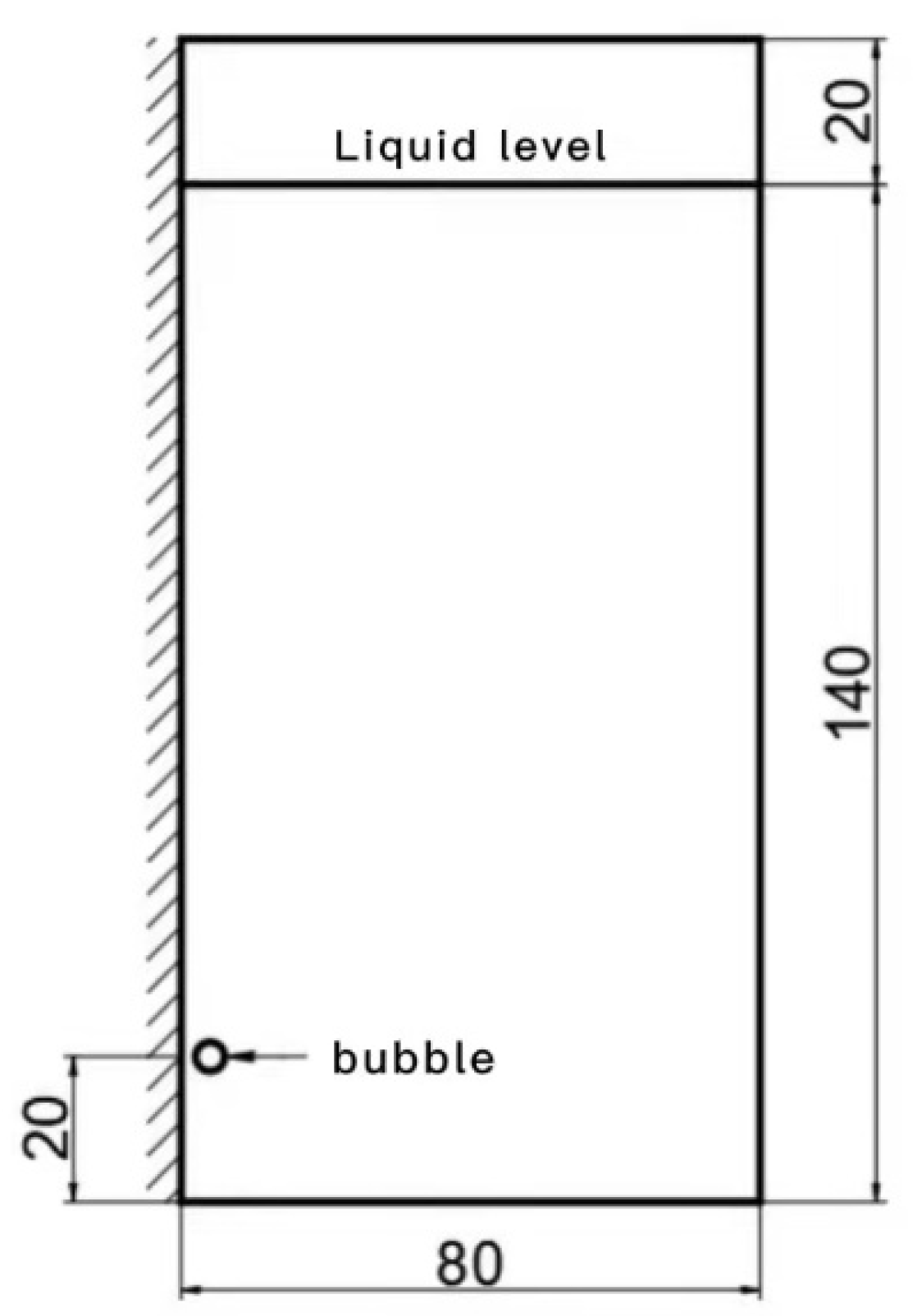
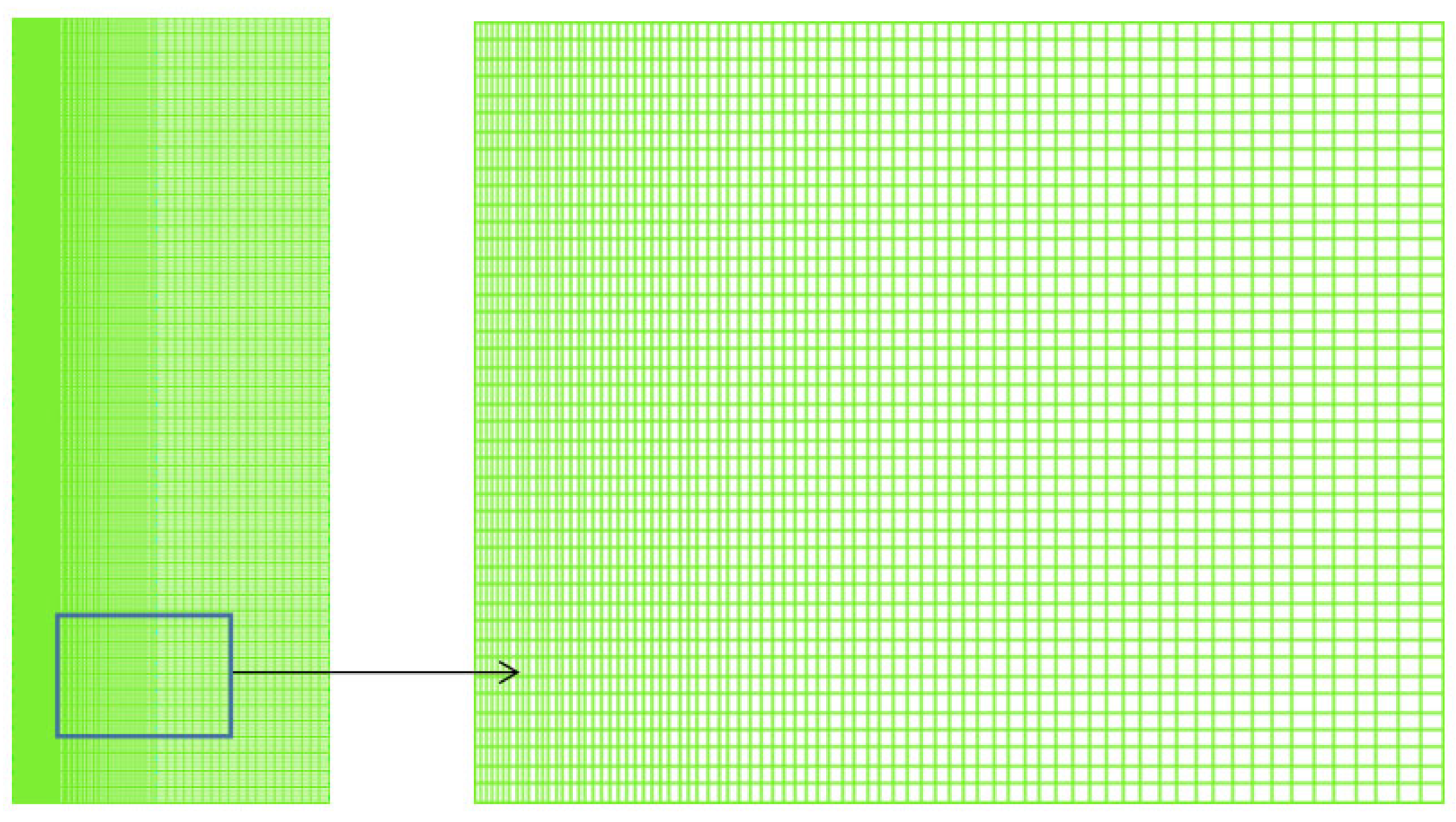
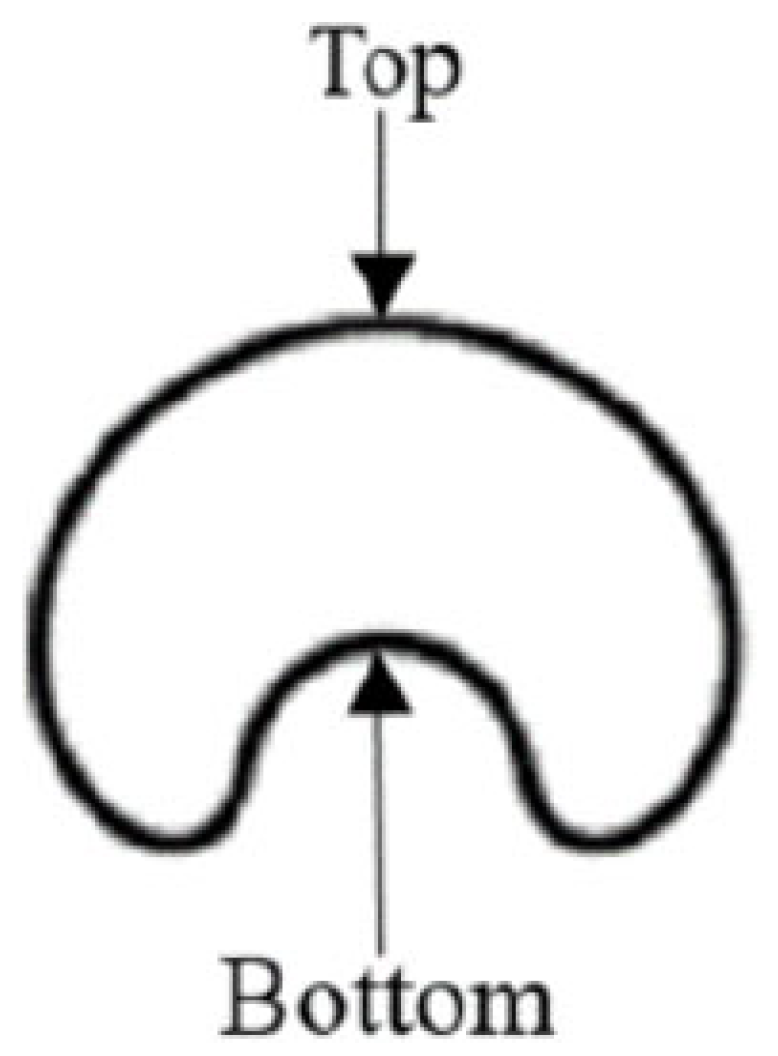
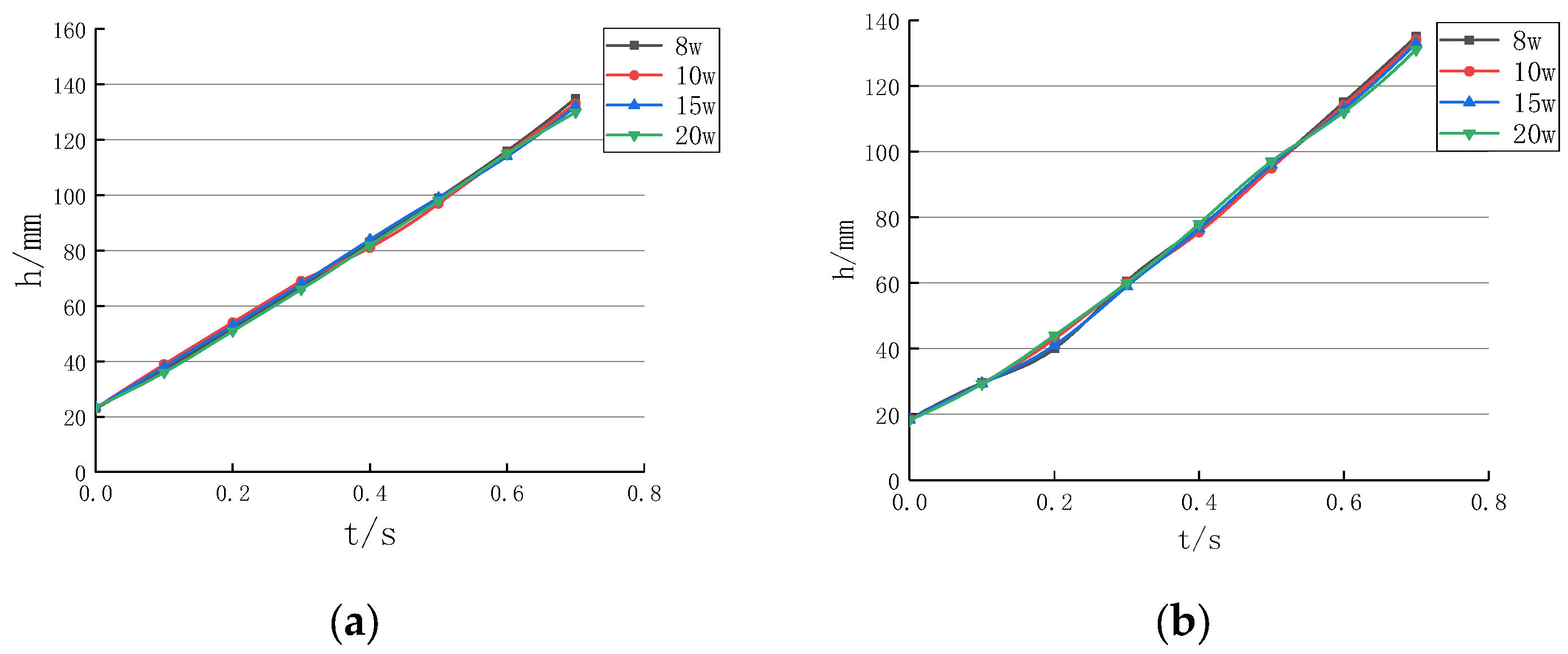
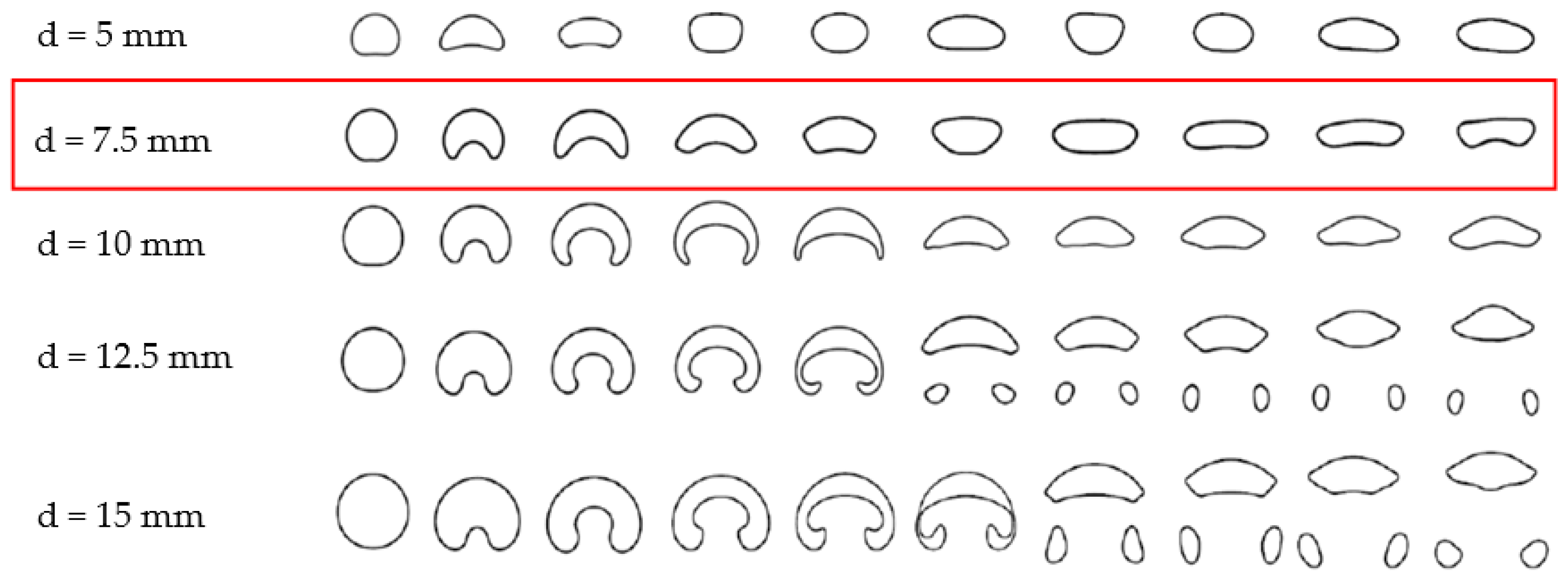
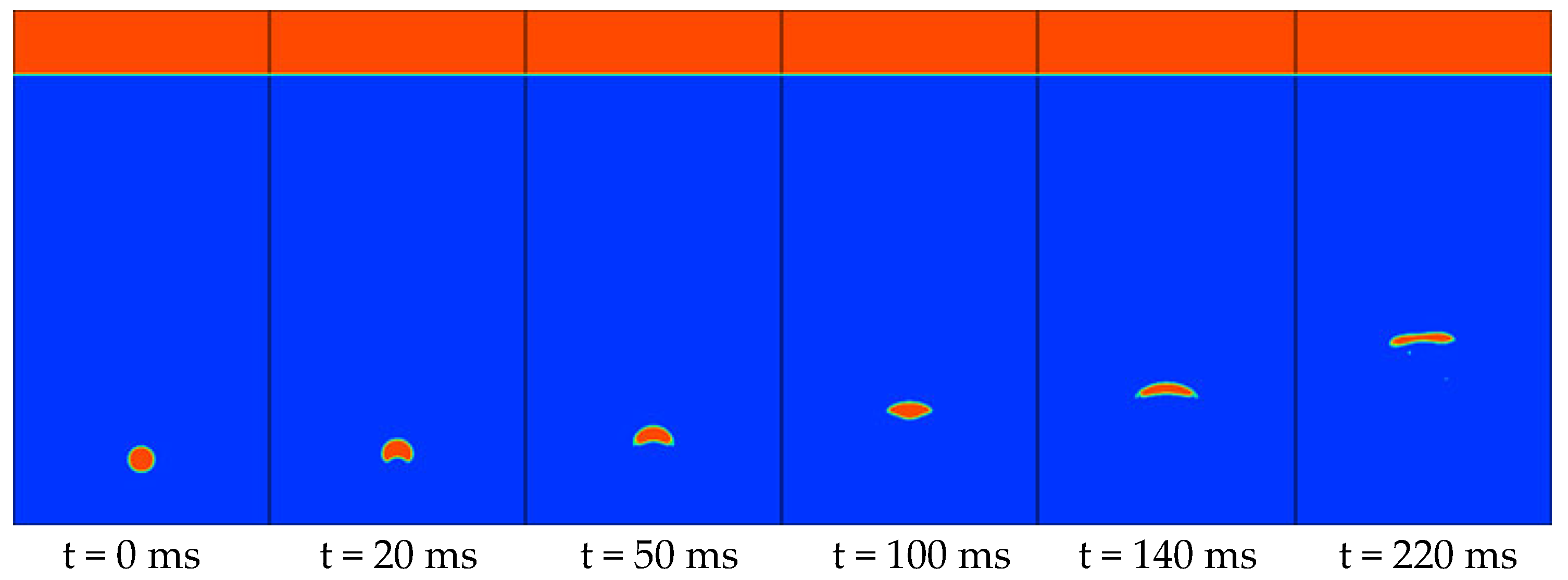
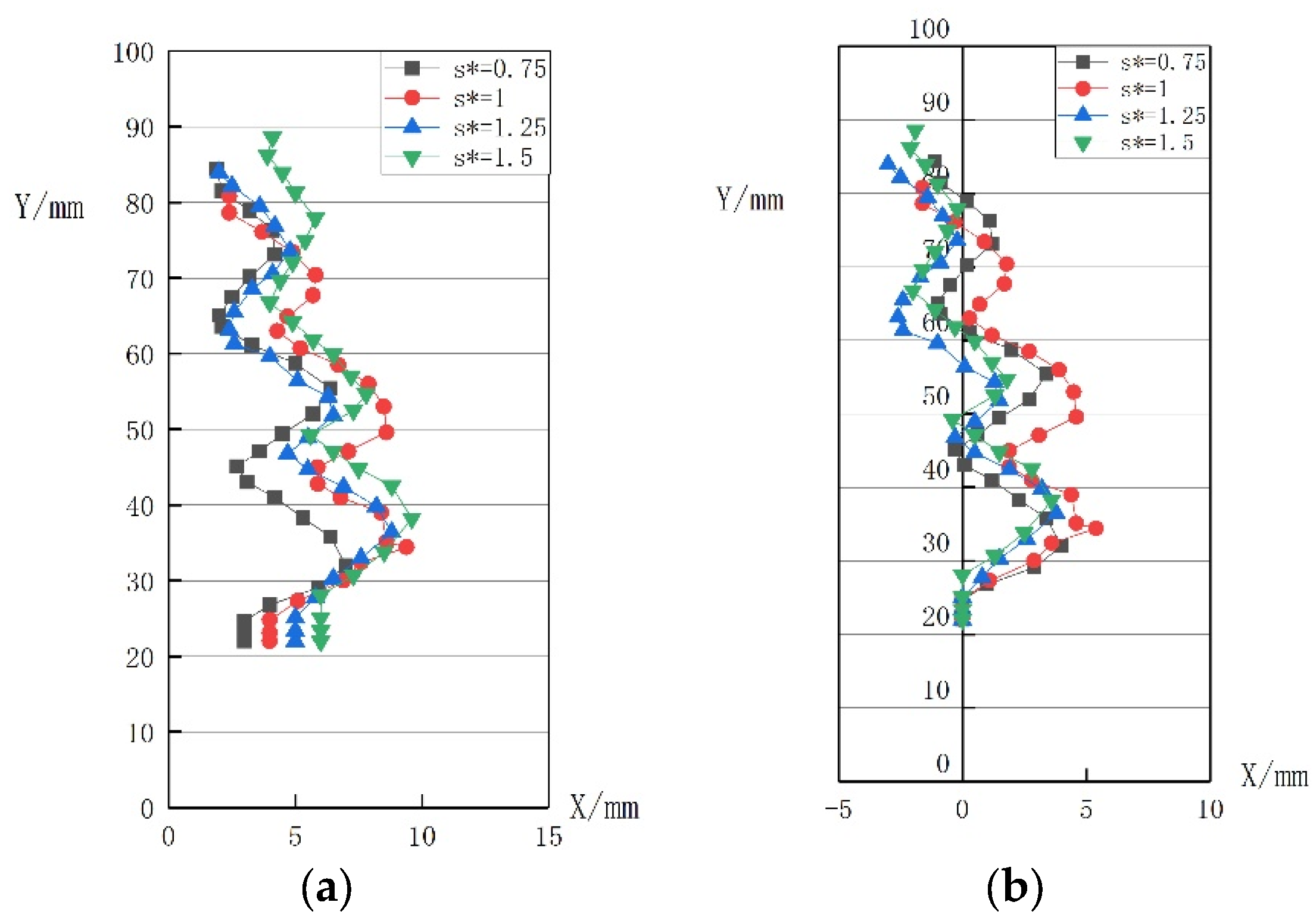
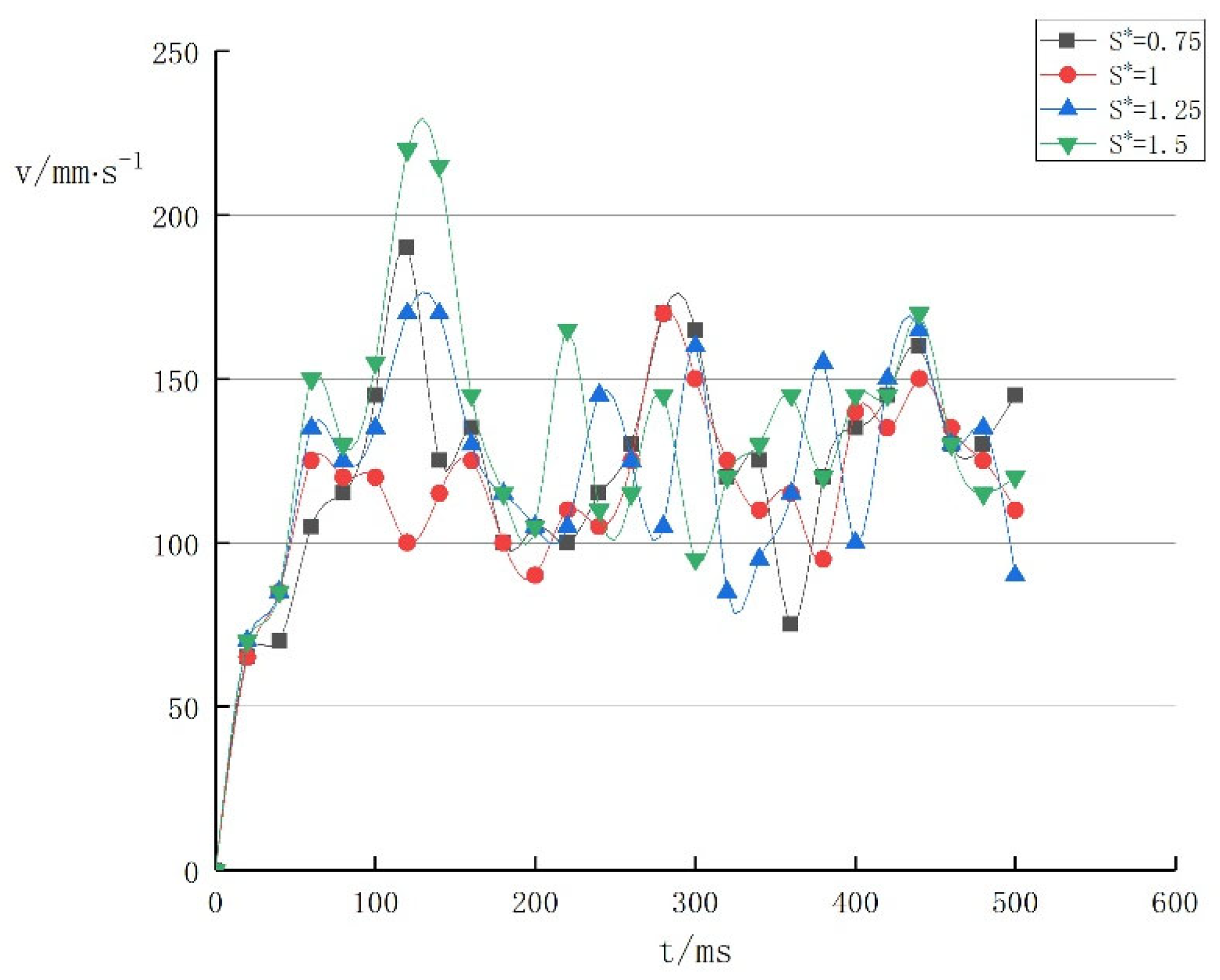

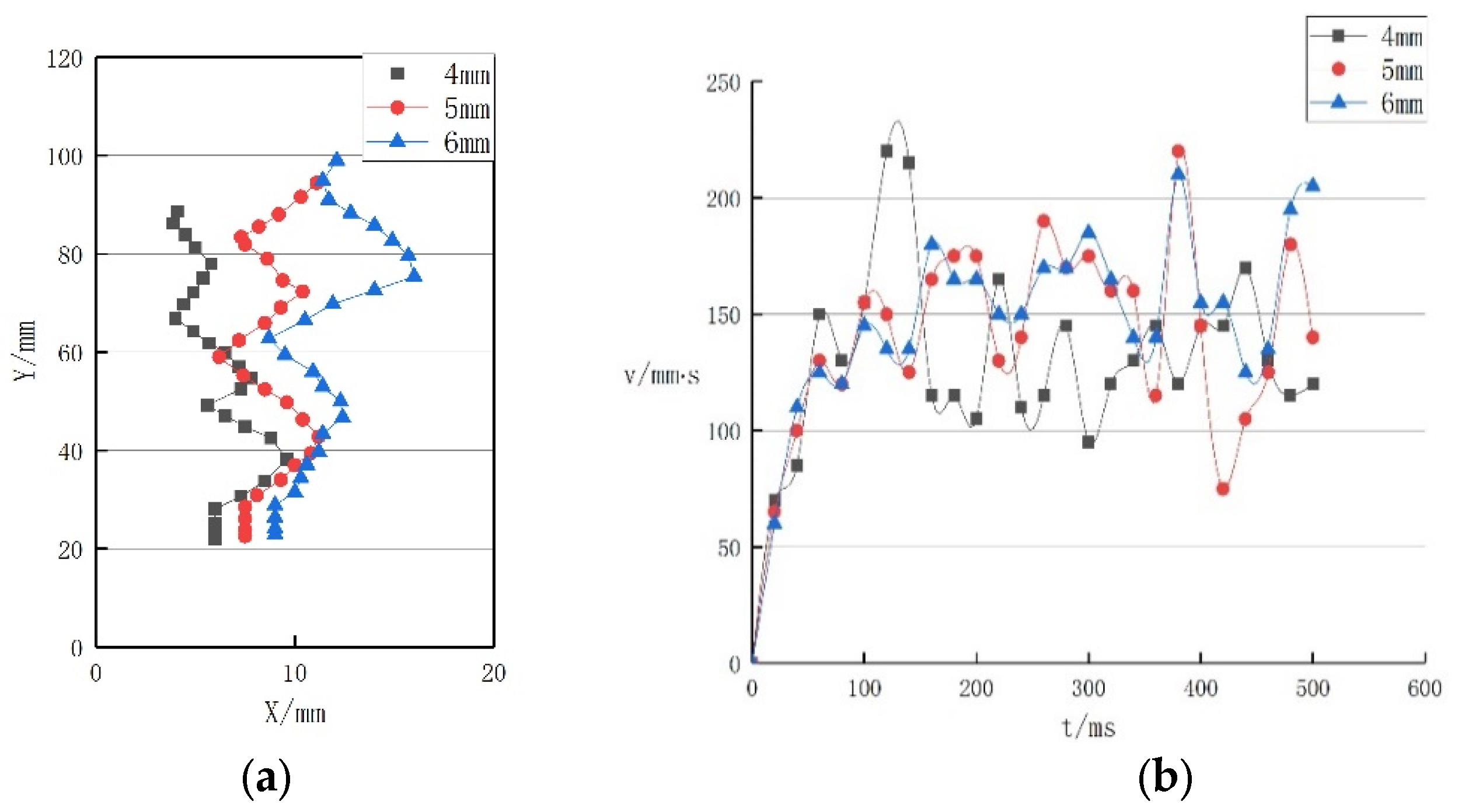
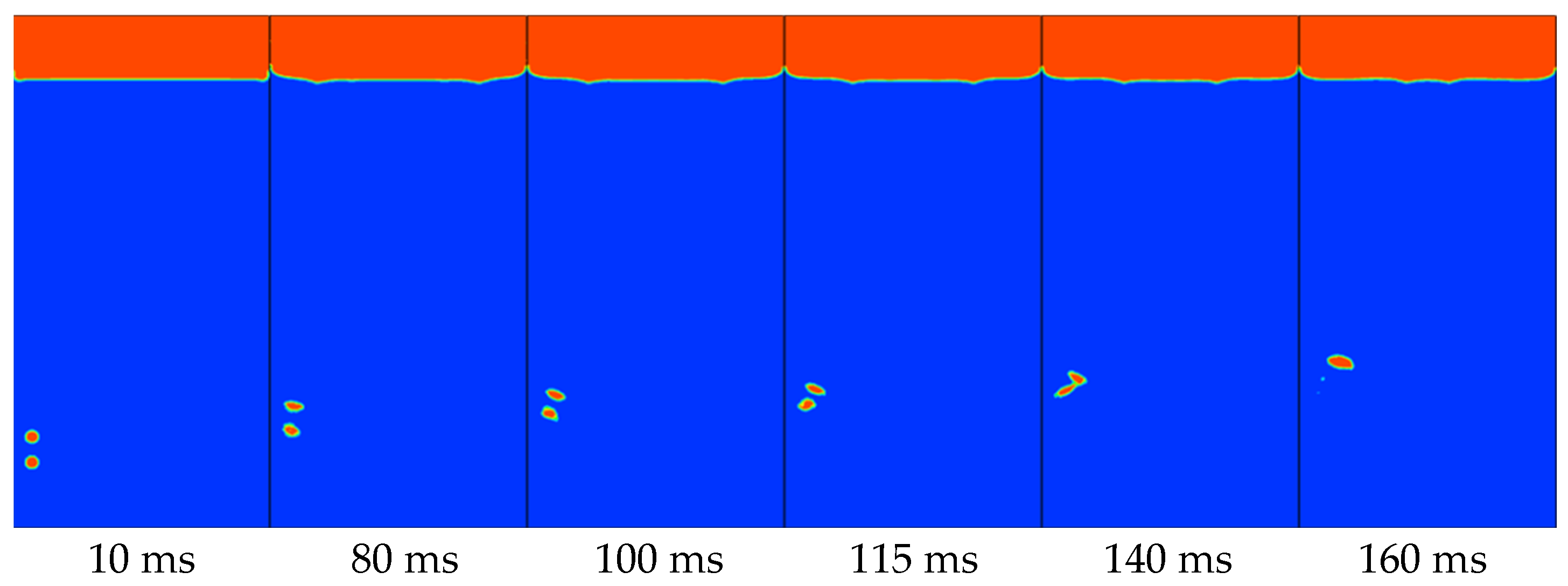
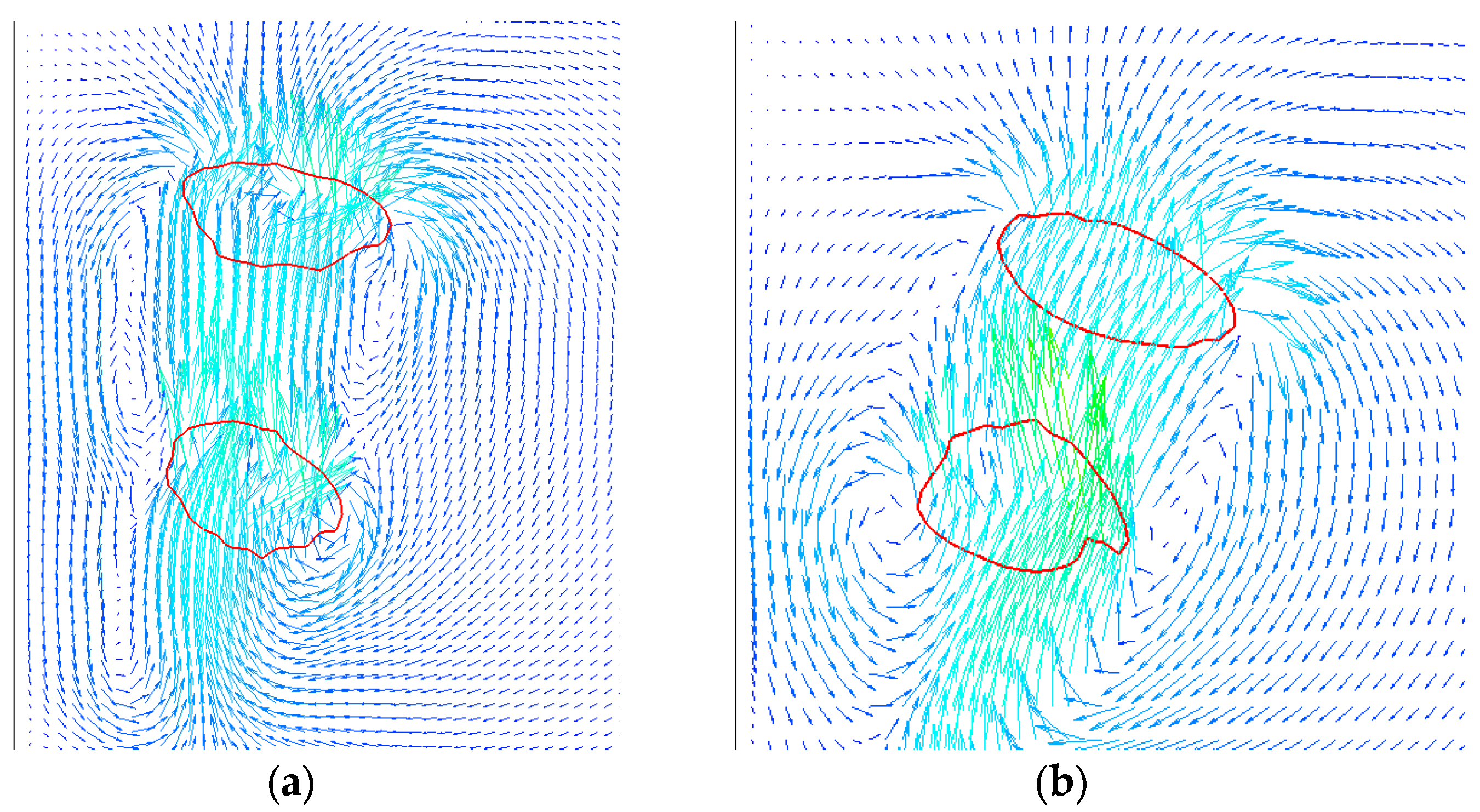
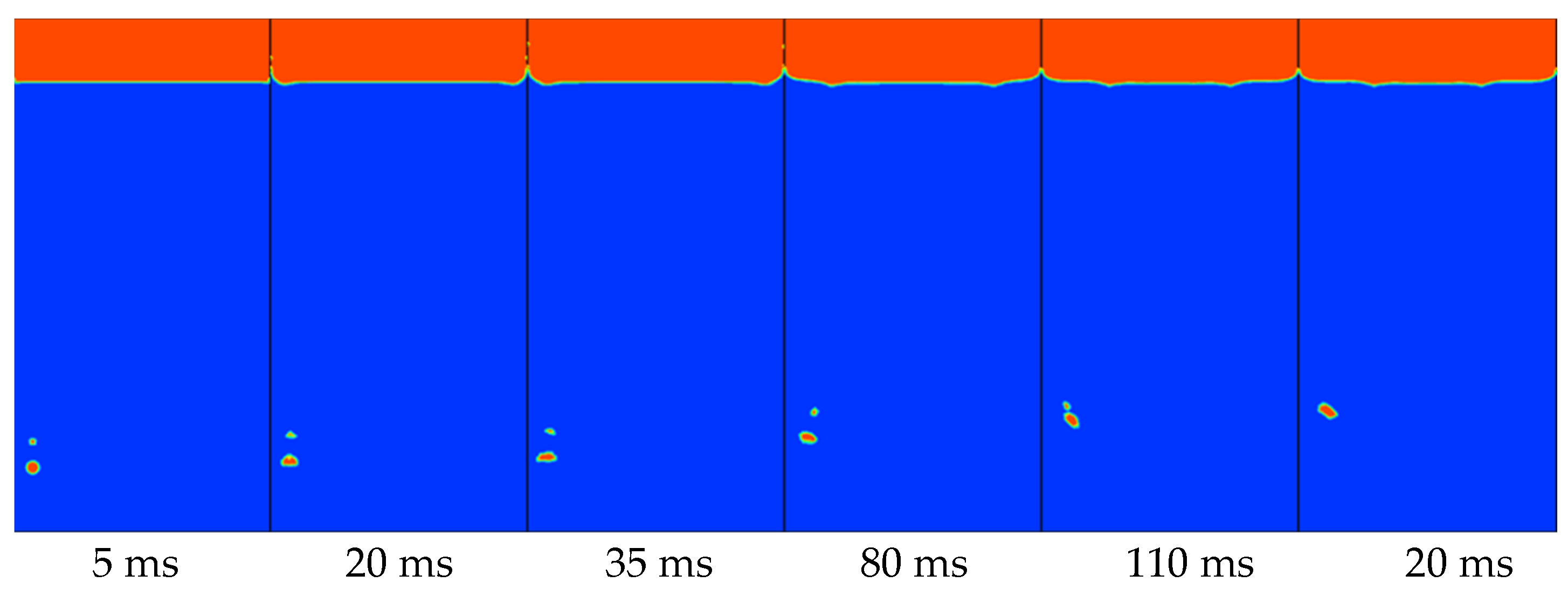
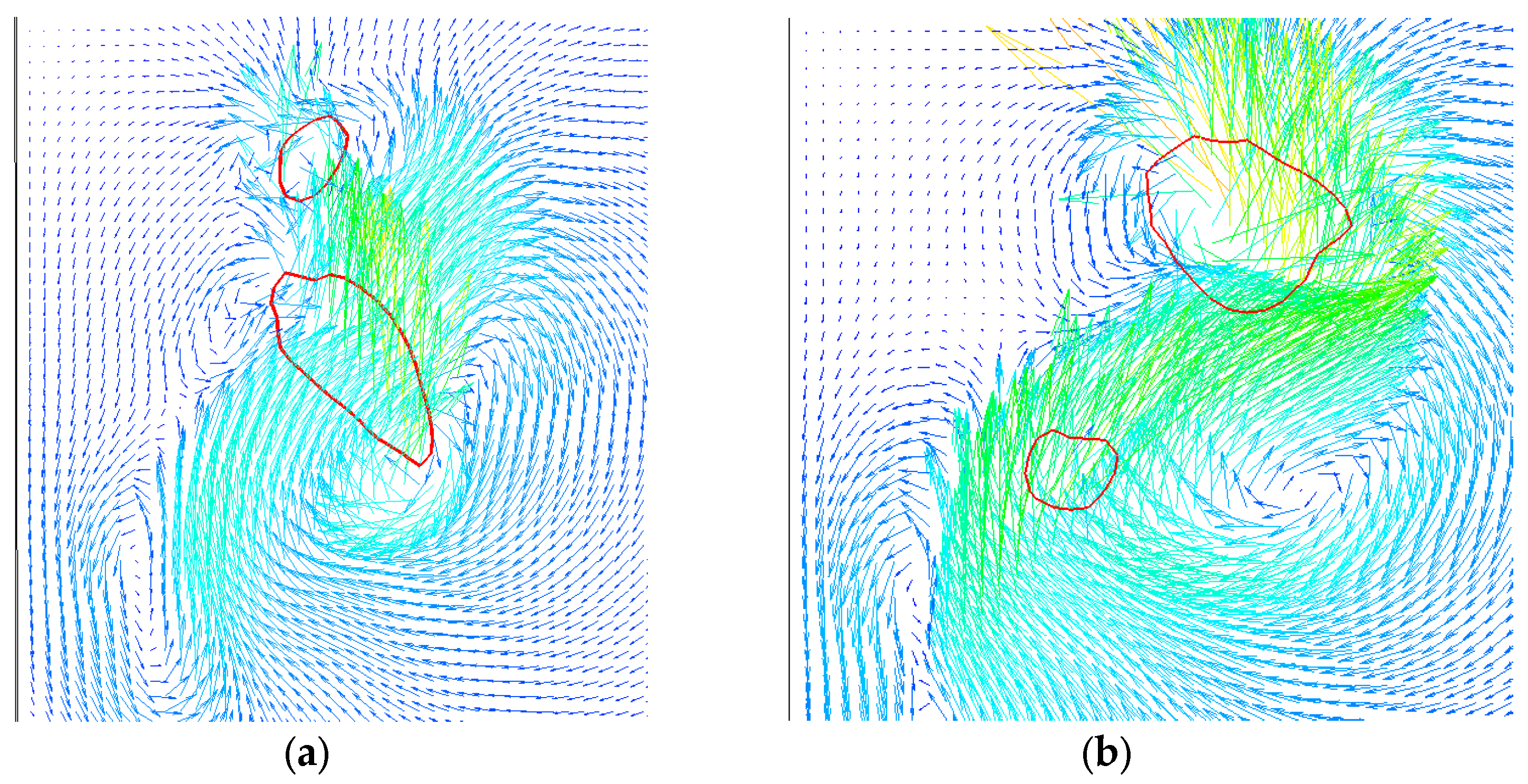

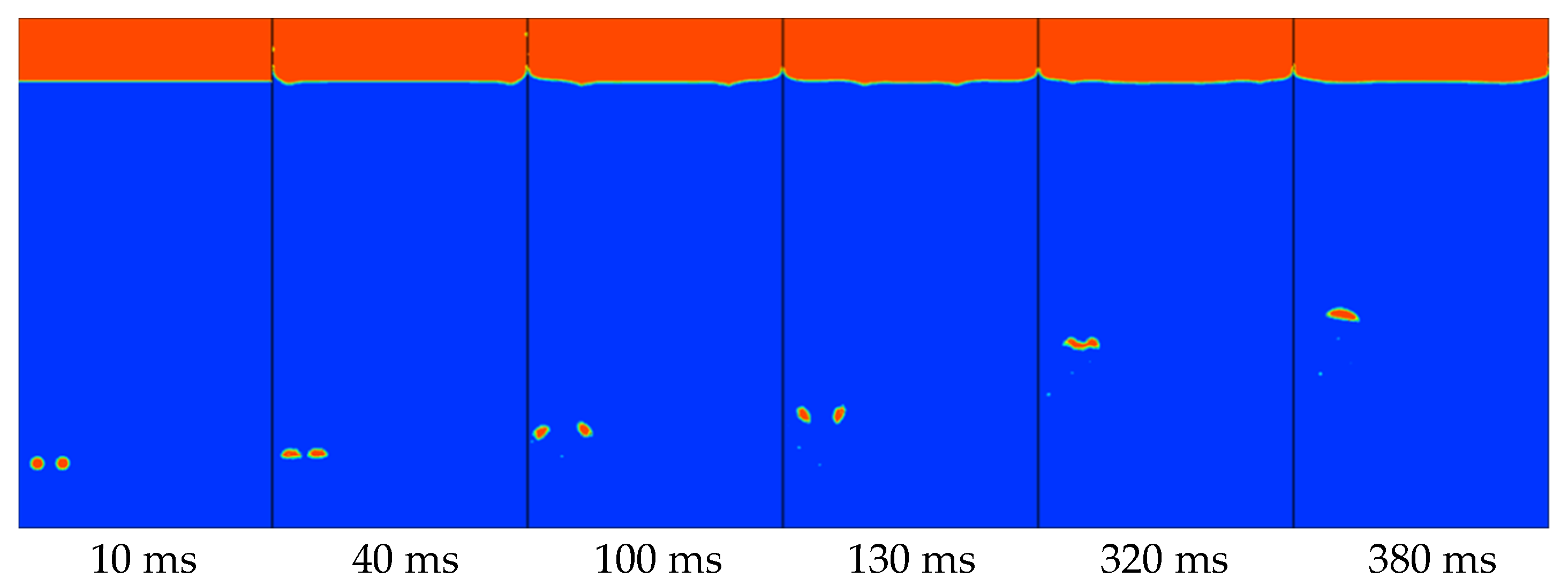
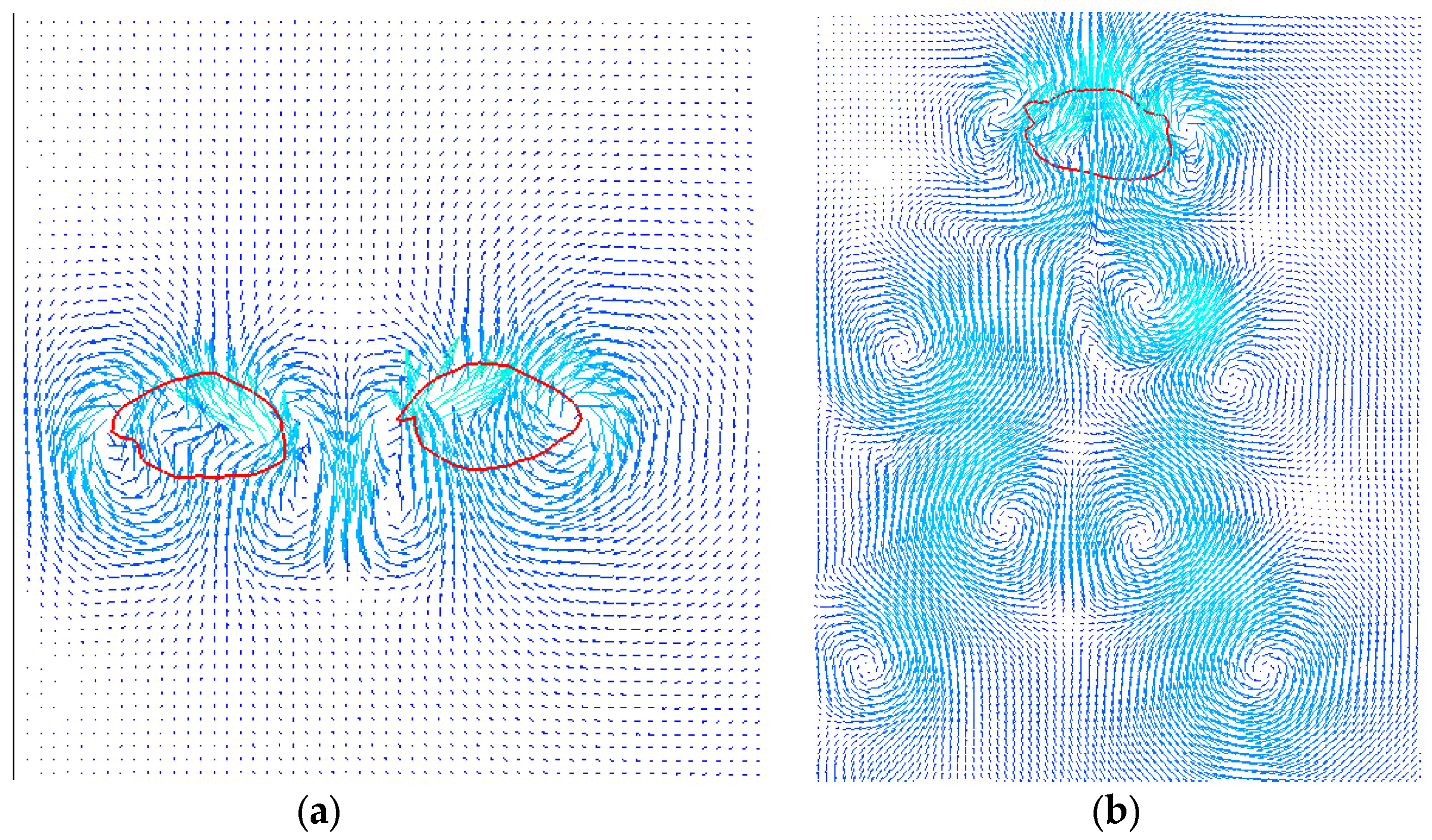
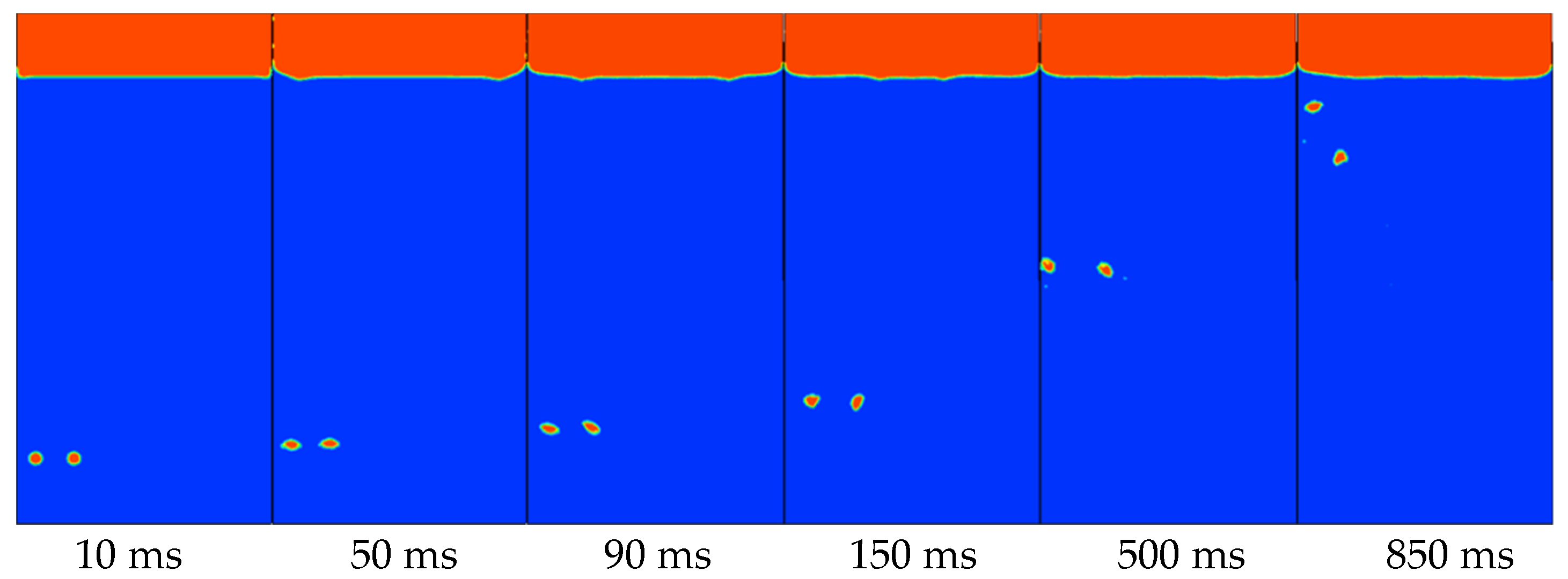
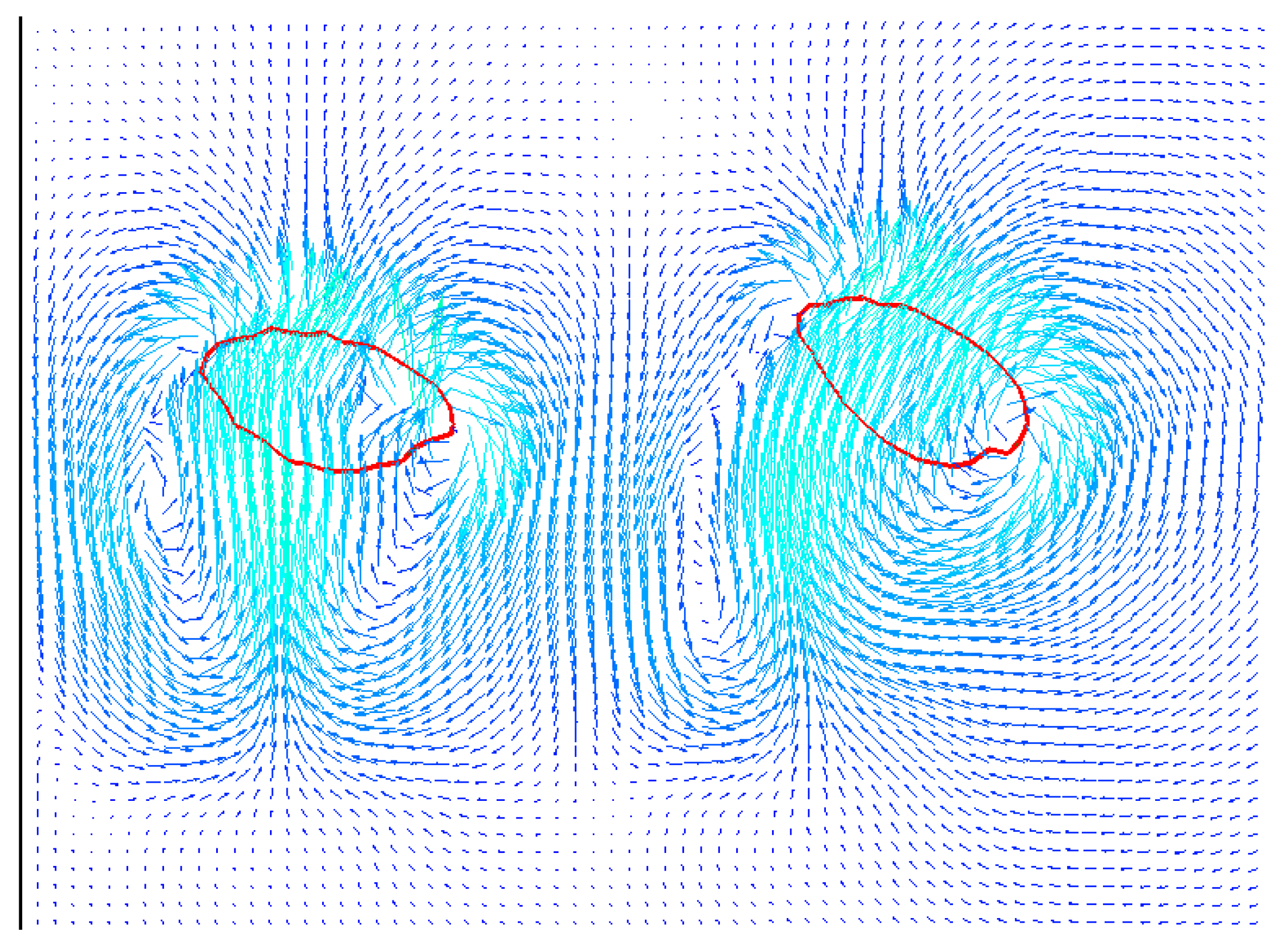
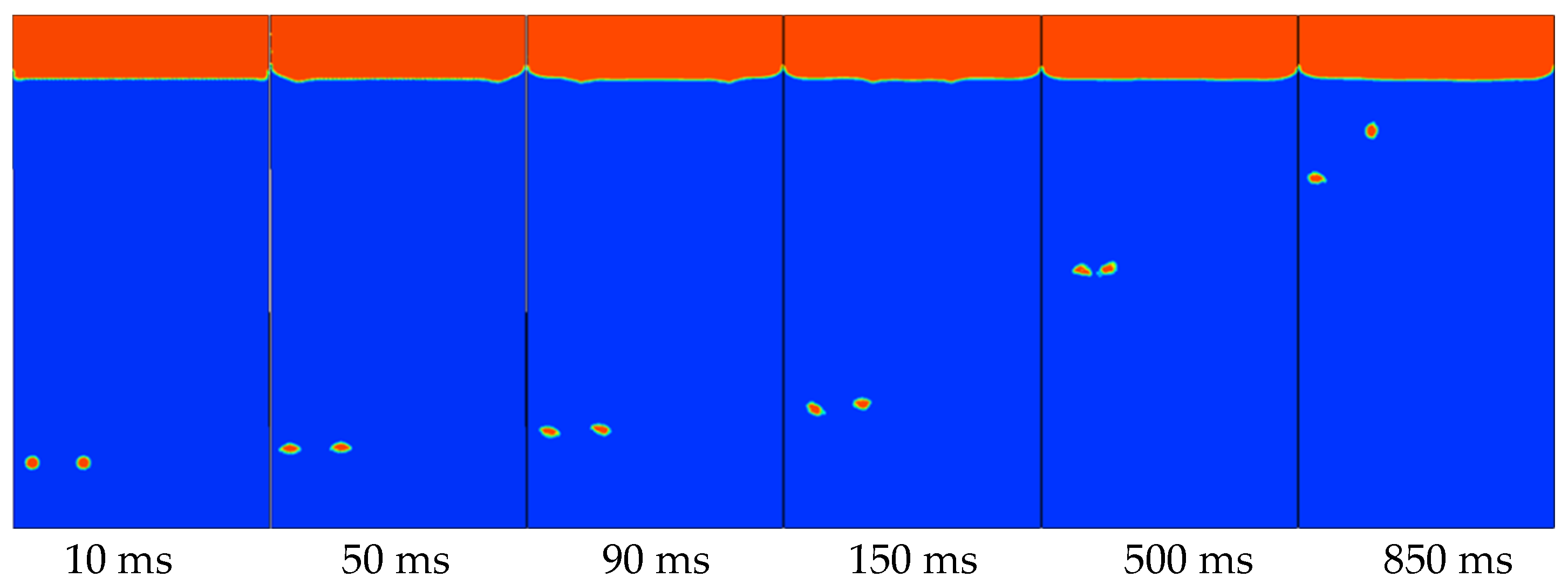
| S* | L1/mm | L2/mm | L3/mm | L4/mm | L5/mm | L/mm | Hmax/mm | F/s−1 |
|---|---|---|---|---|---|---|---|---|
| 0.75 | 4.0 | 4.3 | 3.4 | 4.4 | 2.2 | 3.66 | 84.4 | 4.16 |
| 1 | 5.4 | 3.5 | 2.7 | 4.3 | 1.5 | 3.48 | 80.8 | 4.42 |
| 1.25 | 3.8 | 4.1 | 1.8 | 4.1 | 2.4 | 3.22 | 84 | 4.69 |
| 1.5 | 3.6 | 4.0 | 2.2 | 3.8 | 1.8 | 3.08 | 88.6 | 4.85 |
| Bubble Diameter /mm | L1/mm | L2/mm | L3/mm | L4/mm | L5/mm | L/mm | Hmax/mm | F/s−1 |
|---|---|---|---|---|---|---|---|---|
| 4 | 3.6 | 4.0 | 2.2 | 3.8 | 1.8 | 3.08 | 88.6 | 4.85 |
| 5 | 3.7 | 5 | 4.2 | 3.1 | -- | 4.0 | 94.4 | 4.24 |
| 6 | 3.4 | 3.7 | 7.3 | 4.6 | -- | 4.75 | 99 | 3.57 |
Publisher’s Note: MDPI stays neutral with regard to jurisdictional claims in published maps and institutional affiliations. |
© 2021 by the authors. Licensee MDPI, Basel, Switzerland. This article is an open access article distributed under the terms and conditions of the Creative Commons Attribution (CC BY) license (https://creativecommons.org/licenses/by/4.0/).
Share and Cite
Zhang, K.; Li, Y.; Chen, Q.; Lin, P. Numerical Study on the Rising Motion of Bubbles near the Wall. Appl. Sci. 2021, 11, 10918. https://doi.org/10.3390/app112210918
Zhang K, Li Y, Chen Q, Lin P. Numerical Study on the Rising Motion of Bubbles near the Wall. Applied Sciences. 2021; 11(22):10918. https://doi.org/10.3390/app112210918
Chicago/Turabian StyleZhang, Kaixin, Yongzheng Li, Qi Chen, and Peifeng Lin. 2021. "Numerical Study on the Rising Motion of Bubbles near the Wall" Applied Sciences 11, no. 22: 10918. https://doi.org/10.3390/app112210918
APA StyleZhang, K., Li, Y., Chen, Q., & Lin, P. (2021). Numerical Study on the Rising Motion of Bubbles near the Wall. Applied Sciences, 11(22), 10918. https://doi.org/10.3390/app112210918






